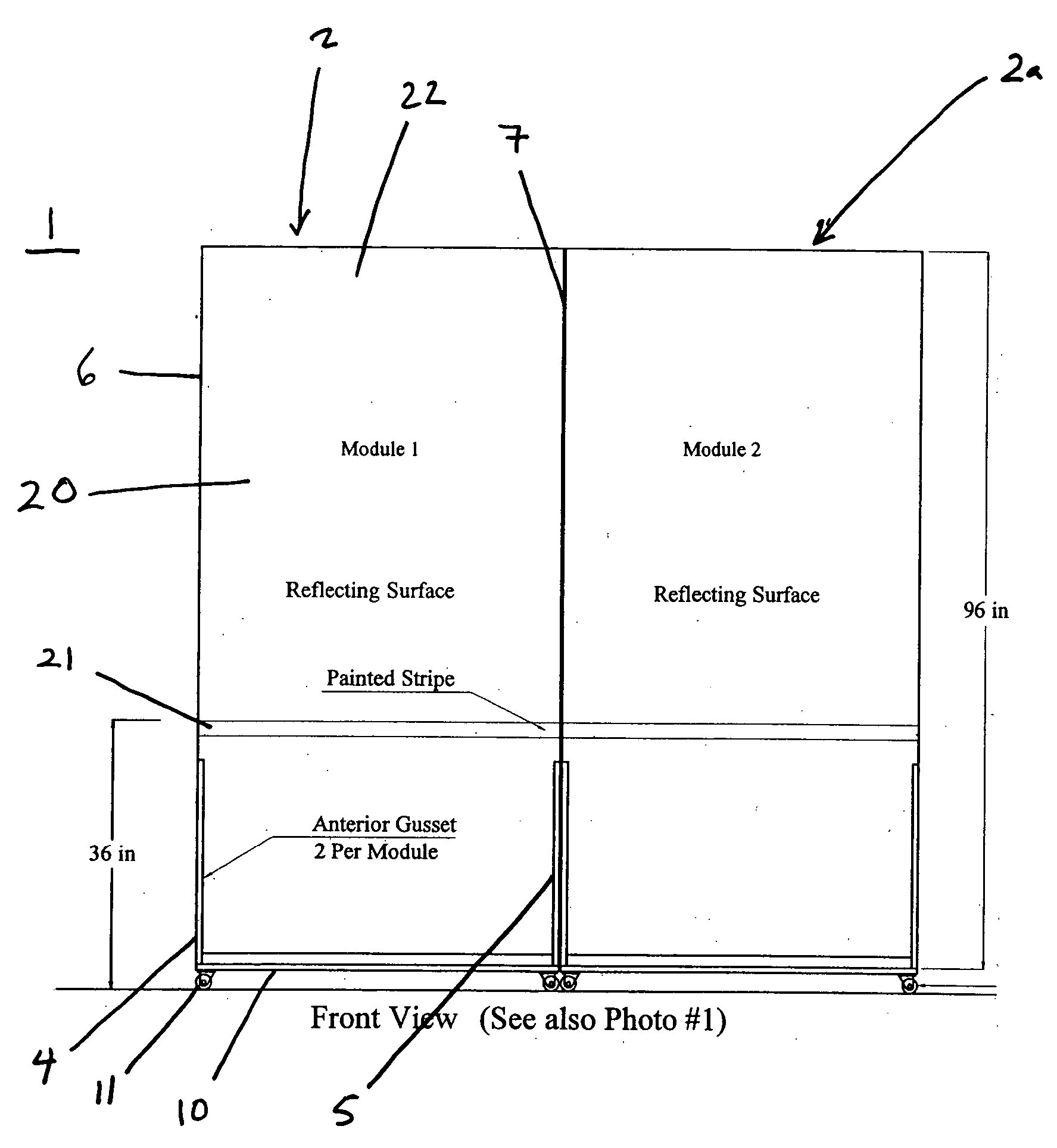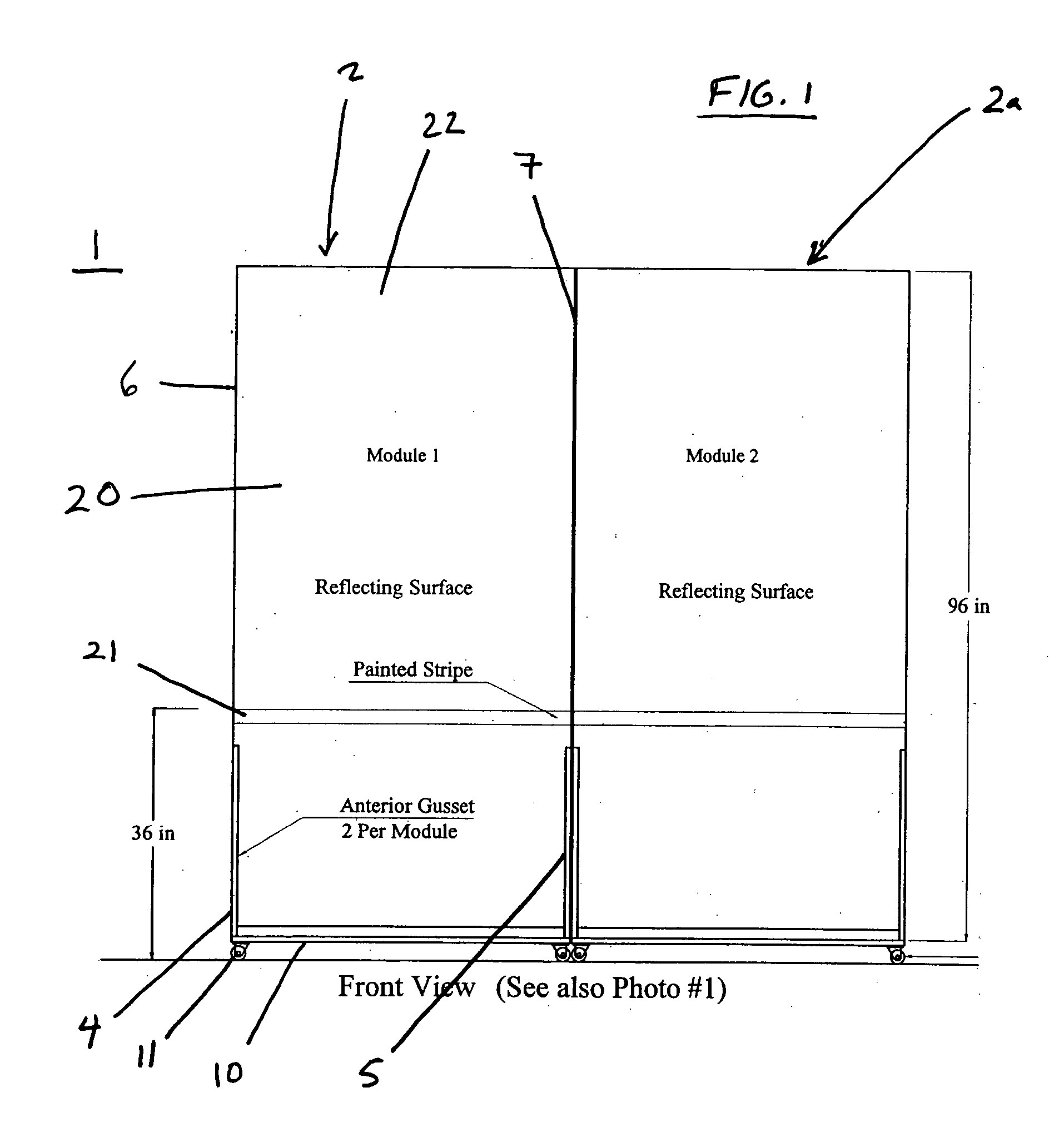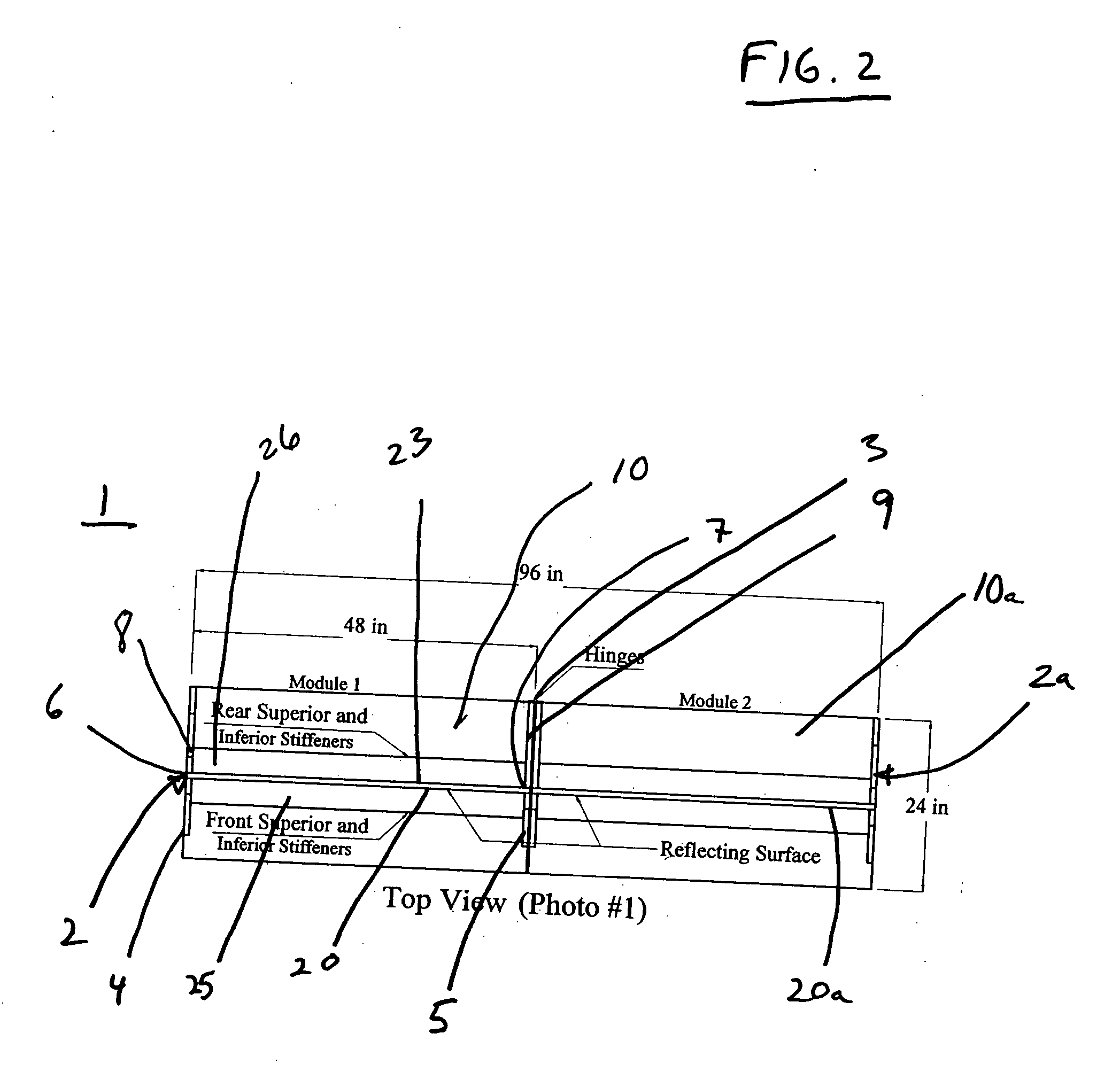Portable tennis backboard
a tennis backboard and tennis technology, applied in the field of tennis backboards, can solve the problems of insufficient space, small structure, large backboards, etc., and achieve the effect of optimal weight distribution and minimizing the chance of being tipped over by acciden
- Summary
- Abstract
- Description
- Claims
- Application Information
AI Technical Summary
Benefits of technology
Problems solved by technology
Method used
Image
Examples
Embodiment Construction
[0022]FIG. 1 depicts a front elevation view of a portable tennis backboard (1) of modular construction that is freestanding. The depicted embodiment demonstrates a portable tennis backboard (1) formed from a first module (2) and a second module (2a), which are each approximately four feet wide and eight feet high. However, different sizes of modules can be utilized. The modules can be constructed from a variety of materials, such as wood, fiberglass, synthetic materials, metal, and a variety of combinations thereof.
[0023] The depicted embodiment shows a first anterior gusset (4) and a second anterior gusset (5) attached to the reflecting surface (20) of module 1. In the depicted embodiment, the first anterior gusset (4) and the second anterior gusset (5) are attached to the lateral edge (6) and medial edge (7) of the reflecting surface (20), which has a tennis net height indicator (21) formed approximately 36 inches above ground level on the front side (22) of the reflecting surfac...
PUM
 Login to View More
Login to View More Abstract
Description
Claims
Application Information
 Login to View More
Login to View More - R&D
- Intellectual Property
- Life Sciences
- Materials
- Tech Scout
- Unparalleled Data Quality
- Higher Quality Content
- 60% Fewer Hallucinations
Browse by: Latest US Patents, China's latest patents, Technical Efficacy Thesaurus, Application Domain, Technology Topic, Popular Technical Reports.
© 2025 PatSnap. All rights reserved.Legal|Privacy policy|Modern Slavery Act Transparency Statement|Sitemap|About US| Contact US: help@patsnap.com



